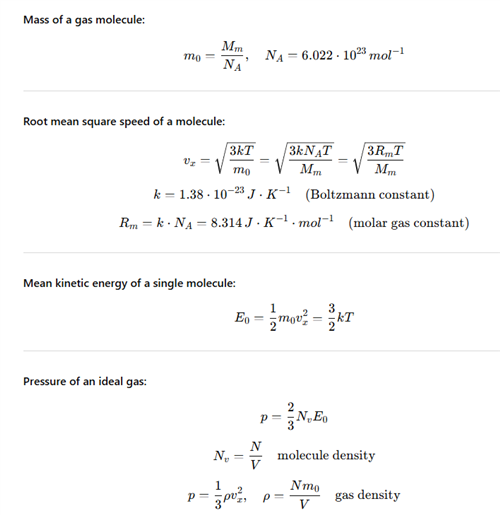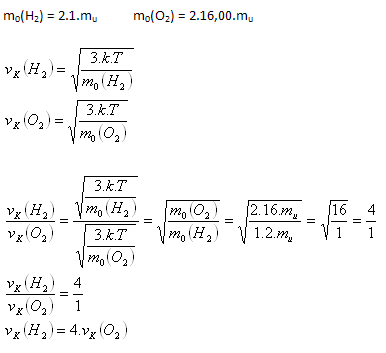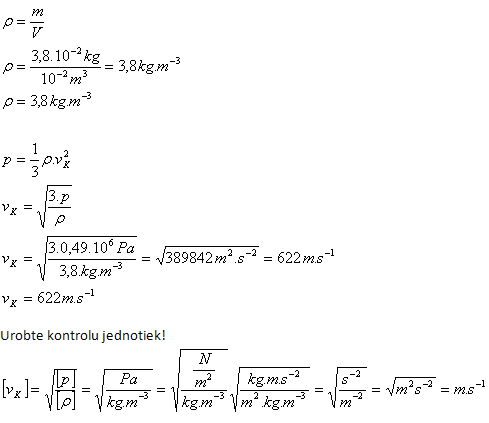Ideal gas
1. Explain the properties of an ideal gas
Solution:
An ideal gas is not a real gas; it is a model of a gas. Its molecules have negligible size and identical masses m0. Collisions between molecules and their impacts on the container walls are perfectly elastic. Impacts of molecules on the container walls are the cause of the gas pressure. Molecules do not exert forces on each other. Under "standard conditions" (p0 = 101325 Pa, T0 = 273.15 K) the properties of real gases approach those of an ideal gas. Under these conditions 1 mol of any gas always has volume V0 = 22.415×10-3 m3·mol-1.

2.Calculate the root-mean-square speed of an oxygen molecule O2 at temperature 0°C!
Solution:
Analysis:
T = t + 273.15
T = 0 + 273.15 = 273.15
m0 = Ar·mu = 2·16.00·1.66·10-27 = 53.12×10-27 kg
k = 1.38×10-23 J·K-1

The root-mean-square speed of an O2 molecule is vK = 461 m·s-1
3.Determine the ratio of the root-mean-square speeds of hydrogen (H2) and oxygen (O2) molecules at the same temperature.
Solution:
Analysis:

Hydrogen molecules will move 4 times faster than oxygen molecules.
4.What is the air pressure at temperature T = 273.15 K, if the mass of an air molecule is m0 = 47.45×10-27 kg and the air density at this temperature is ρ = 1.27584 kg·m-3.
Solution:
Analysis:
T = 273.15 K, m0 = 47.45×10-27 kg, ρ = 1.27548 kg·m-3.

The air pressure at temperature T = 273.15 K is p0 = 101325 Pa. This is the so-called "standard pressure" of air.
5.An ideal gas with mass m = 3.8×10-2 kg is enclosed in a vessel with volume 10 liters and has pressure p = 0.49 MPa. Determine the root-mean-square speed of the gas molecules.
Solution:
Analysis:
m = 3.8×10-2 kg, p = 0.49×106 Pa, V = 10 liters = 10-2 m3

The root-mean-square speed of the gas is vK = 622 m·s-1